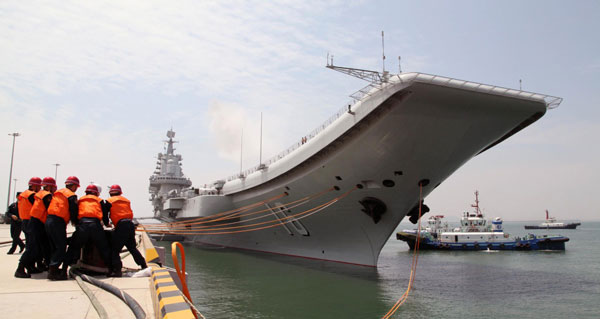
The following is a from Feb. 28, 2014 report from the Congressional Research Service, China Naval Modernization: Implications for U.S. Navy Capabilities.
China is building a modern and regionally powerful Navy with a modest but growing capability for conducting operations beyond China’s near-seas region. The question of how the United States should respond to China’s military modernization effort, including its naval modernization effort, has emerged as a key issue in U.S. defense planning. The question is of particular importance to the U.S. Navy, because many U.S. military programs for countering improved Chinese military forces would fall within the Navy’s budget.
As a part of the U.S. strategic rebalancing toward the Asia-Pacific region announced in January 2012, Department of Defense (DOD) planning is placing an increased emphasis on the Asia- Pacific region. Observers expect that, as a result, there will be a stronger emphasis in DOD planning on U.S. naval and air forces. Administration officials have stated that notwithstanding constraints on U.S. defense spending, the U.S. military presence in the Asia-Pacific region will be maintained and strengthened.
Decisions that Congress and the executive branch make regarding U.S. Navy programs for countering improved Chinese maritime military capabilities could affect the likelihood or possible outcome of a potential U.S.-Chinese military conflict in the Pacific over Taiwan or some other issue. Some observers consider such a conflict to be very unlikely, in part because of significant U.S.-Chinese economic linkages and the tremendous damage that such a conflict could cause on both sides.
In the absence of such a conflict, however, the U.S.-Chinese military balance in the Pacific could nevertheless influence day-to-day choices made by other Pacific countries, including choices on whether to align their policies more closely with China or the United States. In this sense, decisions that Congress and the executive branch make regarding U.S. Navy programs for countering improved Chinese maritime military forces could influence the political evolution of the Pacific, which in turn could affect the ability of the United States to pursue goals relating to various policy issues, both in the Pacific and elsewhere.
China’s naval modernization effort encompasses a broad array of weapon acquisition programs, including anti-ship ballistic missiles (ASBMs), anti-ship cruise missiles (ASCMs), submarines, surface ships, aircraft, and supporting C4ISR (command and control, communications, computers, intelligence, surveillance, and reconnaissance) systems. China’s naval modernization effort also includes reforms and improvements in maintenance and logistics, naval doctrine, personnel quality, education and training, and exercises.
Observers believe China’s naval modernization effort is oriented toward developing capabilities for doing the following: addressing the situation with Taiwan militarily, if need be; asserting or defending China’s territorial claims in the South China Sea and East China Sea; enforcing China’s view that it has the right to regulate foreign military activities in its 200-mile maritime exclusive economic zone (EEZ); displacing U.S. influence in the Western Pacific; and asserting China’s status as a leading regional power and major world power.
Consistent with these goals, observers believe China wants its military to be capable of acting as an anti-access/area-denial (A2/AD) force—a force that can deter U.S. intervention in a conflict in China’s near-seas region over Taiwan or some other issue, or failing that, delay the arrival or reduce the effectiveness of intervening U.S. forces. China may also use its navy for other purposes, such as conducting maritime security (including anti-piracy) operations, evacuating Chinese nationals in foreign countries when necessary, and conducting humanitarian assistance/disaster response (HA/DR) operations.





